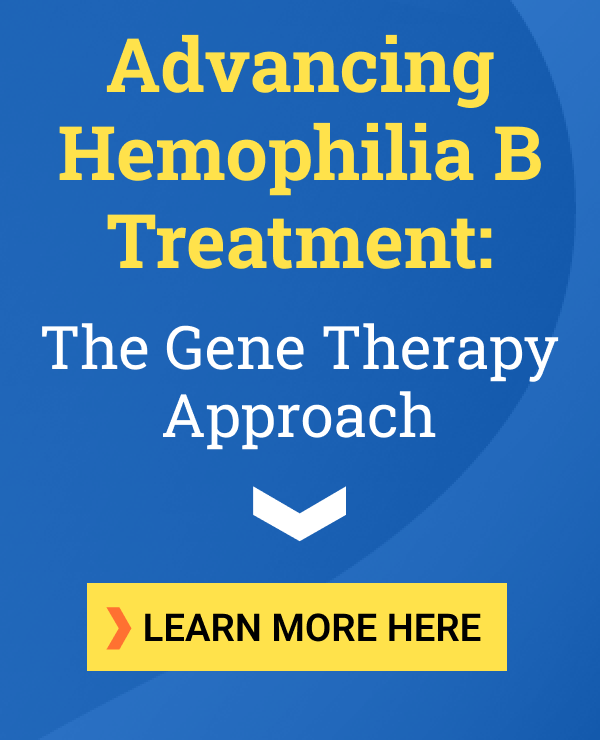Genetic testing raises questions about my bleeding disorders
Do I face a new, ultrarare diagnosis? Further test results may hold the answer

I eagerly anticipate a future where inherited bleeding disorders can be conclusively diagnosed, with absolute certainty, through genetic tests.
Currently, conditions such as von Willebrand disease (VWD) pose diagnostic challenges, frequently requiring multiple tests over extended periods for confirmation. Although my initial diagnosis came after a single test, the inconsistency in my various levels from low normal to below normal has been perplexing. In addition, the guidelines have changed a few times since my diagnosis regarding just what a “normal” cutoff is.
Diagnosing hemophilia becomes easy when it runs in the family. However, for someone like me, without a familial history, the revelation of such a condition can cause profound shock and surprise.
These circumstances have led me toward impostor syndrome, making me question the unlikely occurrence of not one but two rare bleeding disorders in my life. Doubts about the accuracy of my diagnoses occasionally arise in my mind, prompting me to reflect on my numerous instances of unusual bleeding and medical professionals expressing astonishment at its severity.
I am not crazy, I often have to tell myself.
Genetic testing brings a surprise
After considering genetic testing to gain clarity, I opted for whole genome sequencing. The processing period exceeded six months, but the results have been enlightening. The identified genetic mutation they found for me explains my low factor IX levels and confirms my hemophilia B diagnosis. But the genetic test also revealed an unexpected discovery: Glanzmann thrombasthenia, a lifelong, ultrarare, and potentially severe bleeding disorder.
Surprisingly, the genetic testing did not confirm a genetic mutation for VWD, raising the question in my mind of a potential misdiagnosis. Discussions with my hematologist revealed that Glanzmann, which was noted because I had two recessive copies of mutations, doesn’t explain my low VWD levels, and science has yet to identify all of the genetic variants for VWD. Consequently, I find myself facing the possibility of a third rare bleeding disorder.
My big question was, ‘Does this matter?’
After 58 years with VWD and hemophilia, I finally find myself in a positive space regarding my bleeding issues and the treatment I’m receiving. It’s taken time, but I feel somewhat confident in my care and my ability to handle bleeds.
However, the potential diagnosis of Glanzmann thrombasthenia sparked heightened interest from my hematologist, prompting my recent visit to my hemophilia treatment center in Tampa, Florida. To help explore this potential diagnosis, numerous vials of my blood were drawn for extensive testing, and the samples were dispatched to reputable institutions, including the Mayo Clinic in Minnesota.
In alignment with my goal of furthering research, one of my blood vials was directed to the American Thrombosis and Hemostasis Network‘s ATHN 10 study. This noteworthy initiative offers complimentary genetic testing for those diagnosed with rare bleeding disorders. Its overarching goal is to enrich both genotypic and phenotypic data related to the population facing rare coagulation disorders, as the ATHN 10 capsule articulates on the organization’s website.
The collective efforts of such studies hold immense promise for advancing our comprehension of these conditions and ultimately improving diagnostic precision in the years ahead.
A possible treatment change
In discussing the potential outcomes, my hematologist explained that if the results indeed confirmed Glanzmann thrombasthenia, my treatment plan would involve the addition of platelets and/or NovoSeven. The prospect of this regimen, added to my current treatments, sounded horrible. The discussion left me in shock, with questions about the accuracy of the test that led to this potential diagnosis.
Encouragingly, some other results have returned, and they don’t fully support a Glanzmann diagnosis. A definitive conclusion will probably come with the comprehensive testing results from the Mayo Clinic and further genetic testing. And that could take several months.
Note: Hemophilia News Today is strictly a news and information website about the disease. It does not provide medical advice, diagnosis, or treatment. This content is not intended to be a substitute for professional medical advice, diagnosis, or treatment. Always seek the advice of your physician or another qualified health provider with any questions you may have regarding a medical condition. Never disregard professional medical advice or delay in seeking it because of something you have read on this website. The opinions expressed in this column are not those of Hemophilia News Today or its parent company, Bionews, and are intended to spark discussion about issues pertaining to hemophilia.









Comments
Frances Rothwell
YOU Have enough to put up wit, with one bleeding disorder, but two..Good luck and may your troubles always be little ones.
Jennifer Lynne
Thank you, Frances ❤️ I hope you have a happy and healthy holiday season.